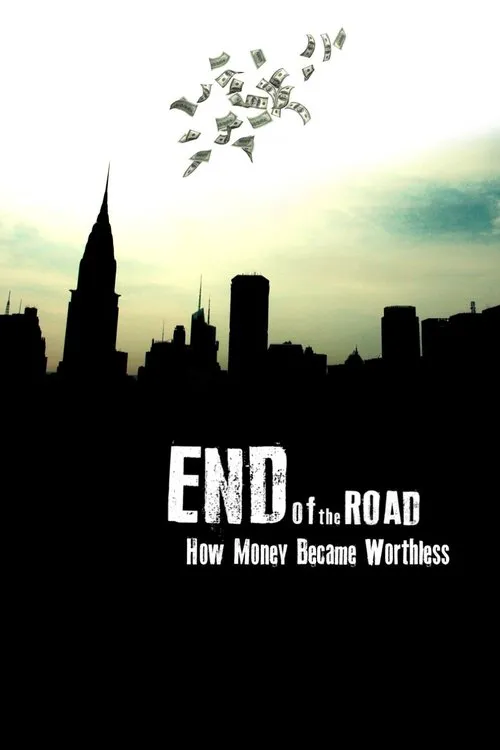End of the Road: How Money Became Worthless

Plot
The documentary "End of the Road: How Money Became Worthless" delves into the tumultuous world of finance, tracing the roots of the global financial collapse that left many wondering if the financial crisis was truly over, or if the world was teetering on the brink of economic disaster. The film begins by setting the stage for the impending doom that was to befall the global economy. As the camera pans over the occupied Wall Street, the sense of unease is palpable. People from all walks of life are gathered, some protesting, others simply observing the chaos that unfolded before their eyes. The once-majestic financial hub of the world has been reduced to a hotspot of fear and anger, where people are demanding answers to the question that had been plaguing everyone's minds: Is the financial crisis over, or are we headed towards economic disaster? As the narrator sets the scene, the film takes us back in time, to the immediate aftermath of World War II. The seeds of the financial crisis were sown in the post-war era, where the world was trying to rebuild and recover from the devastating effects of the war. The Bretton Woods Agreement, established in 1944, marked a significant shift in the global economic landscape. The agreement created a new international monetary order, where the US dollar was pegged to gold, and other currencies were tied to the dollar. However, as the film shows, this system was not foolproof. The US government began to print more money to finance its military interventions and social programs, which inevitably led to inflation. The gold standard was abandoned in 1971, and the world was left to face a new reality where fiat currencies were the norm. The value of money was no longer tied to the value of gold, but to the confidence of those who used it. As the narrator explains, this shift in the global economic order created new opportunities for financial manipulation and speculation. The advent of modern financial instruments, such as derivatives and credit default swaps, allowed institutions to take on increasingly reckless bets, which ultimately culminated in the 2008 financial crisis. The film takes a closer look at the key players who contributed to the financial collapse. It profiles former CEOs, economists, and politicians, including Alan Greenspan, former Federal Reserve Chairman, who was instrumental in creating the conditions for the crisis. Greenspan, in an interview with the filmmakers, acknowledges his role in the collapse, stating that he had become a believer in the self-regulating power of the markets, only to realize too late that the system was flawed. The documentary also explores the role of government policies and regulation in exacerbating the crisis. The repeal of the Glass-Steagall Act in 1999, which removed the firewall between commercial and investment banking, is highlighted as a major factor that contributed to the crisis. The filmmakers argue that the Act's repeal allowed for reckless behavior by financial institutions, which ultimately led to their downfall. As the film delves deeper into the crisis, it becomes clear that the global financial collapse was not just the result of a few bad actors or regulatory failures, but rather a complex web of factors that interacted to create the perfect storm of economic chaos. One of the most compelling aspects of the documentary is its focus on the human impact of the crisis. The film tells the stories of individuals who lost their homes, their life savings, and their sense of security due to the collapse. Through their stories, we get a glimpse into the personal cost of the financial crisis, which went beyond mere economic losses to include the loss of hope and optimism. The final act of the documentary takes a look at the possible future that may await us all. Influential members of the finance and investment communities, including Warren Buffett and Nouriel Roubini, offer their predictions on the world's financial future. While their views vary, one thing is clear: the global financial system is still fragile, and the risk of another crisis remains ever-present. As the film concludes, the sense of uncertainty lingers. The global financial collapse was a complex and multifaceted phenomenon, caused by a combination of factors, including policy failures, regulatory lapses, and plain old-fashioned greed. The documentary leaves us with a question that remains at the heart of the crisis: Is the financial crisis truly over, or are we headed towards economic disaster? The answer, much like the future of the global economy, remains a mystery, waiting to be unraveled.
Reviews
Recommendations



